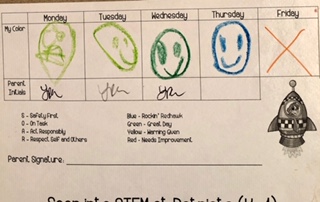Discipline charts are used every day in classrooms. However, they cause more harm than good to students that are vulnerable. These charts shame children and do not regulate behavior. They are not private matters between the teacher and the student. They are public reminders that the teacher says the student is inadequate.
Discipline Charts Work
Many classroom teachers expect behavior charts to work to control behavior. They see that they track specific habits. Also, charts help to maintain order in the classroom without verbal reminders. Charts are a visual reminder of the behavior of what the teacher expects. Teachers feel the chart is an indicator of the progress they make compared to other students.
Charts Don’t Work
Charts do not provide an overview of learning. It does not create a positive bond between teacher and student. In addition to the overall development of the student, it destroys self-esteem if the chart does not reflect positive behavior. There are children that are intrinsically motivated. These students do not need a behavior chart. A chart that depicts behavior stops self-motivation to develop a skill. A ‘one-size fits all’ does not ‘fit all’. Therefore, educators must understand what motivates each child. Consequently, behavior charts are one dimensional.
A Better Approach
Rather than a behavior chart, teachers and parents must model appropriate behaviors. In the classroom, modeling and the use of peer groups helps set the expected behavior in a variety of settings. Instead of a reward for good behavior or punishment for poor behavior, break down the skill so the students’ confidence level builds.
Rewards and punishments very rarely change behavior. Also, students outgrow the rewards. They become meaningless unless they get bigger to make an effect. A reflection into a person’s own behavior will help direct students to behave properly. At times, children get bored with work that is either too easy, confusing or too difficult. Thus, it creates a discipline problem. Also, children need to move rather than sit too much. Hence, teachers and parents must modify what they do and how they conduct a class to achieve the best from each chid’s learning process.




